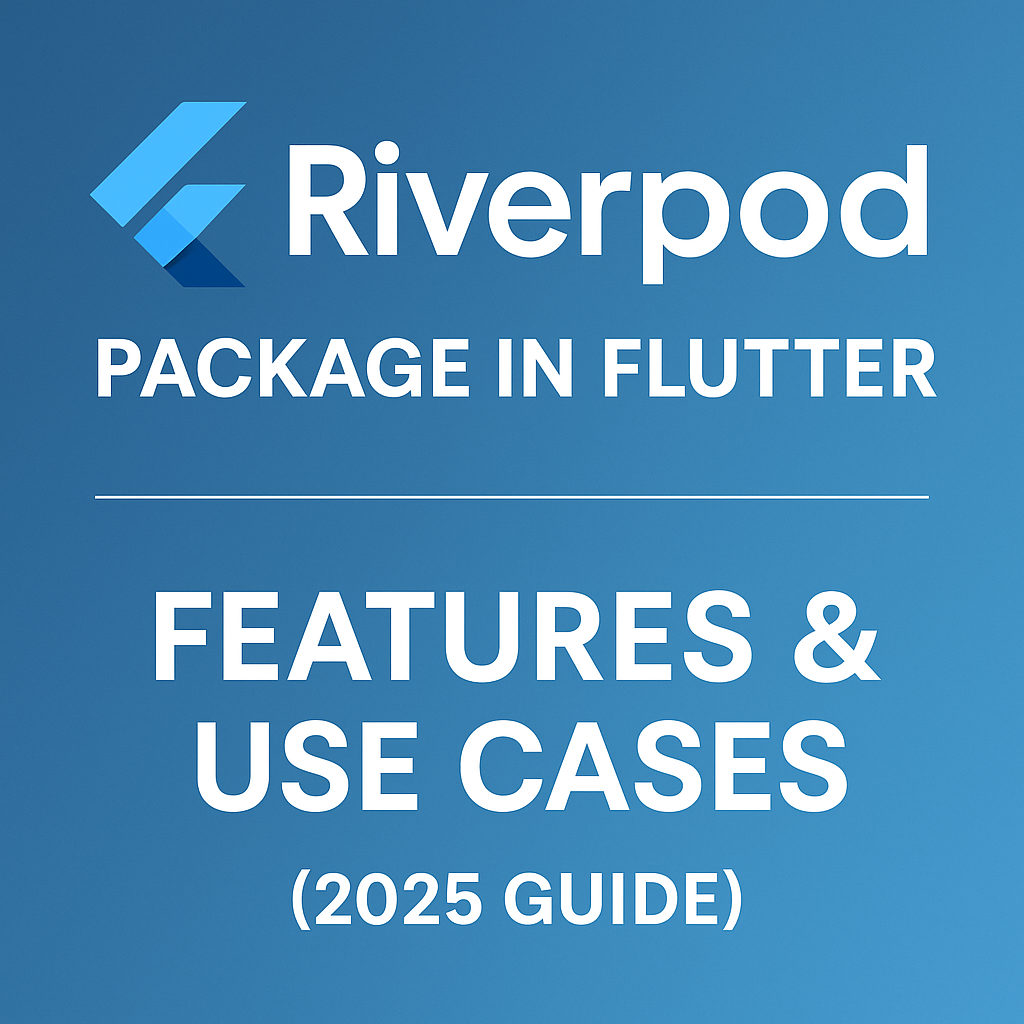Introduction
As Flutter apps become more complex and require more scalable architecture, traditional state management techniques like Provider can become limiting. In 2025, Riverpod is one of the most trusted and modern solutions to manage application state in Flutter.
Designed by the creator of Provider, Riverpod is a safe, testable, and flexible package that works outside the widget tree and handles global, async, and computed states with ease.
Why Choose Riverpod in 2025?
| Feature | Benefit |
|---|---|
| Widget-independent architecture | Use state without relying on BuildContext or widget tree hierarchy |
| Compile-time safety | Eliminates many common runtime errors |
| Built-in async state handling | Ideal for FutureProvider, StreamProvider |
| Code reusability | Define providers once, use across widgets and features |
| Better performance | Fine-grained rebuilds improve performance |
What Makes Riverpod Different?
- Works outside of Flutter (usable in Dart CLI tools or isolates)
- More declarative than Provider, no
ChangeNotifier - Auto-disposable providers clean up memory
- Supports dependency injection patterns
- Used in production apps and preferred by enterprise developers in 2025
Real-Life Use Cases for Riverpod
- User authentication
UseFutureProviderto load user profile after login. - Weather or stock apps
Fetch and stream data usingStreamProvider. - E-commerce app cart
UseStateNotifierProviderto add/remove items and calculate totals. - Dynamic UI themes
Manage global theme state withoutBuildContext. - Onboarding & preferences
Handle onboarding flags and app-wide configurations with persistent storage.
Core Concepts of Riverpod
| Provider Type | When to Use |
|---|---|
Provider | For static or computed values |
StateProvider | For mutable state (like counters) |
FutureProvider | For asynchronous data fetching |
StreamProvider | For listening to streams (e.g., Firebase, sensors) |
StateNotifierProvider | For managing complex logic with StateNotifier |
ChangeNotifierProvider | For migrating old Provider-based classes |
Sample Usage (Counter Example)
Step 1: Add Dependency
yamlCopyEditdependencies:
flutter_riverpod: ^2.4.3
Step 2: Define a StateProvider
dartCopyEditimport 'package:flutter_riverpod/flutter_riverpod.dart';
final counterProvider = StateProvider<int>((ref) => 0);
Step 3: Use in Your Widget
import 'package:flutter/material.dart';
import 'package:flutter_riverpod/flutter_riverpod.dart';
void main() {
runApp(const ProviderScope(child: MyApp()));
}
class MyApp extends StatelessWidget {
const MyApp({super.key});
@override
Widget build(BuildContext context) {
return MaterialApp(
title: 'Riverpod Demo',
home: Scaffold(
appBar: AppBar(title: const Text('Riverpod Counter')),
body: Center(
child: Consumer(
builder: (context, ref, _) {
final count = ref.watch(counterProvider);
return Text('Counter: $count');
},
),
),
floatingActionButton: Consumer(
builder: (context, ref, _) {
return FloatingActionButton(
onPressed: () {
ref.read(counterProvider.notifier).state++;
},
child: const Icon(Icons.add),
);
},
),
),
);
}
}
Best Practices
Always wrap root widget with ProviderScope
- Use
ref.readto mutate state,ref.watchto rebuild UI - Group providers logically in separate files
- Avoid unnecessary rebuilds by separating logic from widgets
- Use
AsyncValuefor robust error/success/loading handling
Frequently Asked Questions (FAQ)
Riverpod does not rely on the widget tree and is compile-time safe. It solves many of Provider’s limitations while providing a more modular and testable approach.
Yes, it’s great for managing Firebase auth, Firestore data, and real-time streams using FutureProvider and StreamProvider.
Absolutely. It supports complex state flows with tools like StateNotifier, AsyncNotifier, and dependency injection.
Yes. Riverpod is designed to be test-friendly. You can easily mock and override providers during testing.
Conclusion
Riverpod is more than just a replacement for Provider—it’s the next evolution of state management in Flutter. In 2025, it’s one of the best choices for scalable, maintainable, and efficient Flutter app architecture.
If you’re starting a serious project or want long-term flexibility, Riverpod is a must-learn package.


